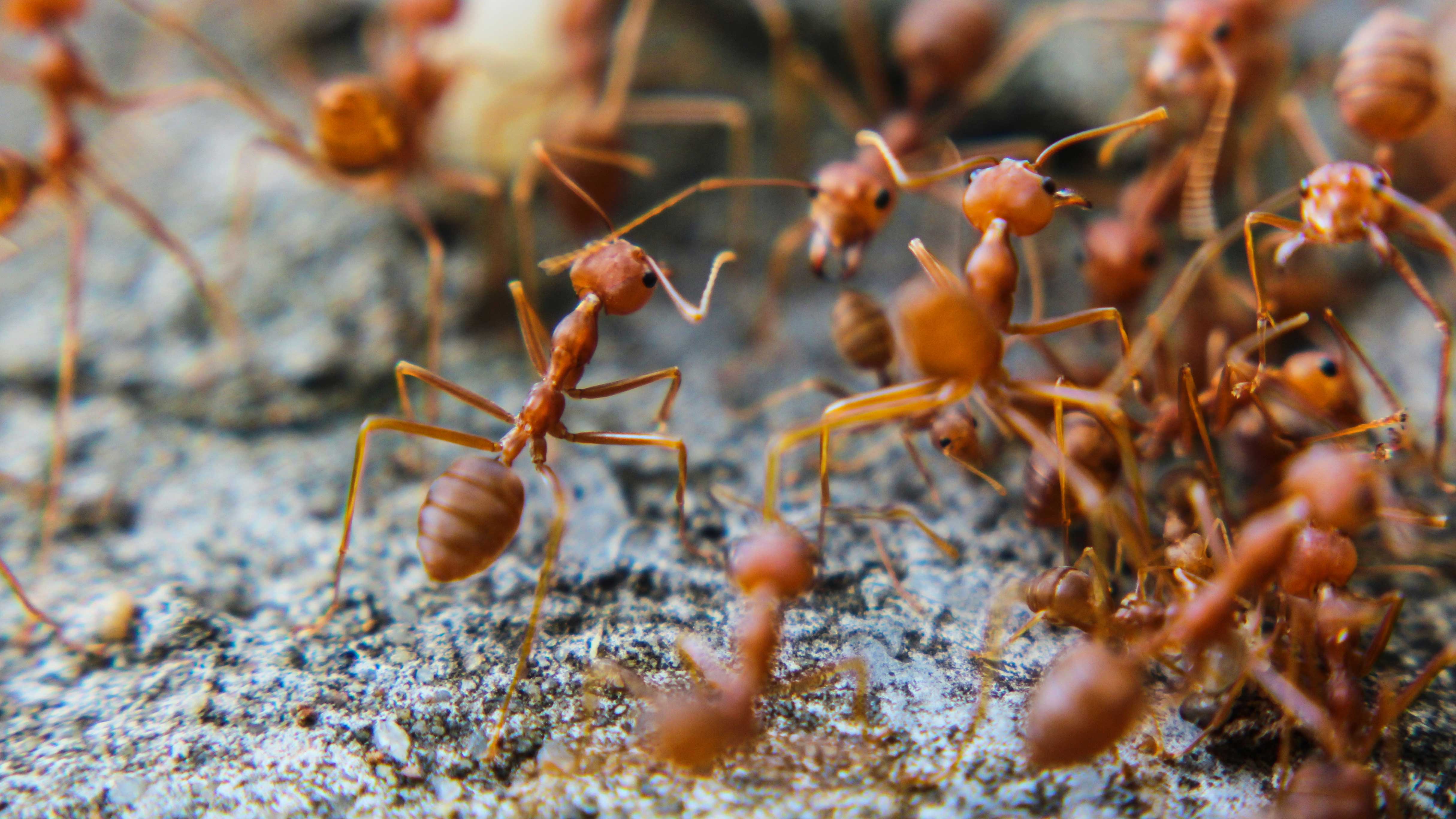Red imported fire ants (RIFA) can be found from coastal North Carolina across the southern/central U.S. to Texas and a few random spots in New Mexico and Southern California.
Native to central South America, fire ants were introduced to the U.S between 1933 and 1945. RIFA have been reported as far north as Maryland and to the west through Kansas. Black imported fire ants are less populous, speckled around northern Mississippi and central/western Tennessee. Second in geographic coverage to RIFA is a hybridized—cross-bred red and black fire ants—ant covering most of northern Alabama, Georgia, and Mississippi, and the southern half of Tennessee.
These species are all invasive (non-native), and there are some indigenous species as well. Most of the southern and southeastern portion of the country is under federal quarantine to reduce the spread. These measures include inspection of nursery stock, sod, hay, and other articles being shipped out of the quarantined areas.
How Fire Ants Spread and Respond When Disturbed
Fire ants are social insects that form colonies around one or multiple queens. Queens may take flight as temperatures rise in the spring and more often following a rainfall event. They will mate and begin a new colony, laying as many as 2,000 eggs per day. Worker ants build underground honeycomb colonies and pile excavated soil near the opening, giving rise to the tell-tale ant mounds. Although their activity seems most prevalent near these mounds, the ants can inhabit tunnels several feet away.
When disturbed, angry ants aggressively emerge from their tunnels to sting intruders. Fire ants have stingers similar to those of bees and hornets and will use them for protection. Sometimes, they’ll bite the invader to hold themselves close while they sting and pump as much venom into the victim as they can.
Sting sites can become red, irritated, itchy, or burn. These areas can end up as a pimple or pustule type of bump. Because the ants attack in groups, victims can end up with several stings. Some individuals may experience an allergic reaction similar to that of a bee sting and develop anaphylaxis, a severe and potentially life-threatening situation.
Although fire ants prey on flea larvae, chinch bugs, cockroach eggs, ticks, and other pests, they are considered a nuisance around the landscape or in pastures. Small animals can be harmed if nests are disturbed and there have been reports of colonies interfering with combines, preventing farmers from harvesting areas of crops. For these reasons, one should look at control options.
Baiting and Other Methods of Fire Ant Prevention and Control
Texas A&M recommends a two-step method for ornamental areas and pastures, provided products are labeled for those sites. Step one is broadcasting a bait over the entire property and step two is mound treatment:
Step 1. Baiting: Spread an approved fire ant bait throughout the property. Faster-acting materials, including indoxacarb (Advion) and hydramethylnon (Amdro), likely will need to be applied more often. There are also slower-acting, longer-lasting materials in abamectin, fipronil, fenoxycarb, methoprene (Extinguish) and pyriproxyfen that can be used. Ants will pick up the bait and bring it back to the nest, where the AI is extracted and fed to others in the colony, including the queen. The slow reaction allows for more time, so most or all in the colony ingest a lethal dose. Baiting is typically favored for large properties due to ease and economics. It also can control unseen mounds.
Step 2. Mound treatment: Treat mounds individually in high-traffic or sensitive areas. These treatments can be granular, dusts, drenches, or soil injections. They tend to be more expensive and labor-intensive, but can provide for rapid knockdown. These treatments often will include a synthetic pyrethroid (thrin) such as Talstar P and can be followed up with a long-lasting material for residual control. Historically rapid-acting insecticides like acephate have been used for the same type of mound treatment, but the EPA is in the process of cancelling all but one use for acephate excluding it as a treatment option.
You also may want to consider products like Taurus Trio, which combine pyrethroids for fast knockdown and fipronil for long residual control. Some of these, particularly fipronil or those containing that AI, are RUP (restricted use pesticides) that require a license to purchase.
Newer to the market is Siesta from BASF, which touts fast knockdown and long residual activity in one bag. The active ingredient is metaflumizone and can be used for broadcast applications or single mound treatments. Siesta belongs to the IRAC group 22B which functions on the nervous system of target insects. Different from most, is that it does not need to be ingested to be converted into a toxic form which accelerates the speed of control.
Also newer to the market is Doxem Plus from Control Solutions Inc. This product consists of 3 active ingredients for excellent activity on ants. Indoxacarb, which is also a 22B group insecticide, but needs to be ingested before being converted into a toxic substance. Interesting is that only target pests have high enough concentration of the particular metabolic enzymes required for conversion of indoxacarb. Doxem Plus is also formulated with Novaluron which is an insect growth regulator (IGR) which inhibits chitin synthesis prohibiting immature insects from becoming adults. The third active ingredient is Pyriproxyfen which is another IGR and functions as a natural hormone mimic that disrupts growth.
For smaller yards, you can opt to go straight to Step 2, particularly if there are singular or just a few mounds. Whichever strategy you choose, read and follow label directions and contact us if you need help.
Lean on Us for Pest Prevention Solutions
Ewing’s Tech Team, myself and Pat Gross, are here to answer your turf-care questions. Email me at klewis@ewingirrigation.com or call/text 480-669-8791. Email Pat at pgross@ewingirrigation.com or call/text 714-321-6101.




